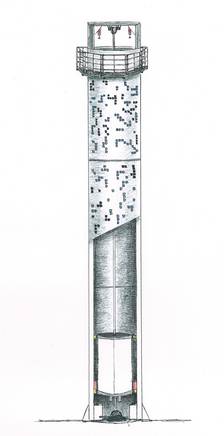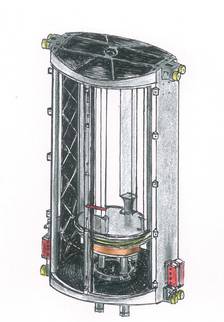

How does the GraviTower Bremen Pro work?
The GraviTower provides scientists with a new space laboratory capable of performing 20 experiments per hour in microgravity.
The GraviTower uses a rail system to perform the experiments. The new feature: The GraviTower does not require a vacuum. A cable drive accelerates a slider carrying the experiment capsule to the exact speed required to compensate for air resistance and create the best possible quality of weightlessness. For the GraviTower, this is about 36 kilometers per hour. The experiment capsule is shielded from the surrounding air by the slider and can even be uncoupled from the track-guided sled structure using a release caging mechanism” (RCM) developed at ZARM. The RCM consists of a complex air bearing system that uncouples external disturbances from the experiment capsule in all axis. As soon as the weightlessness phase is reached, the capsule is decoupled from the slider and becomes a contactless object in free fall for 2.5 seconds. During this time, there is no air movement inside the slider that would slow down the free fall of the experiment capsule, so we achieve a similar quality of weightlessness as in the Drop Tower. Towards the end of the free fall, the experiment capsule is finally reconnected to the slider, and both are decelerated by the cable drive.
After each individual experiment, the scientists can access the experiment setup, vary it and analyze the data already collected. The GraviTower thus offers unique research conditions with the combination of a very high microgravity quality and virtually unlimited access to the experiment after 2.5 seconds.
ZARM realized a second microgravity lab that now works without a vacuum - the GraviTower Bremen Pro. Thus, it will be able to perform 20 experiments per hour.


 "
"